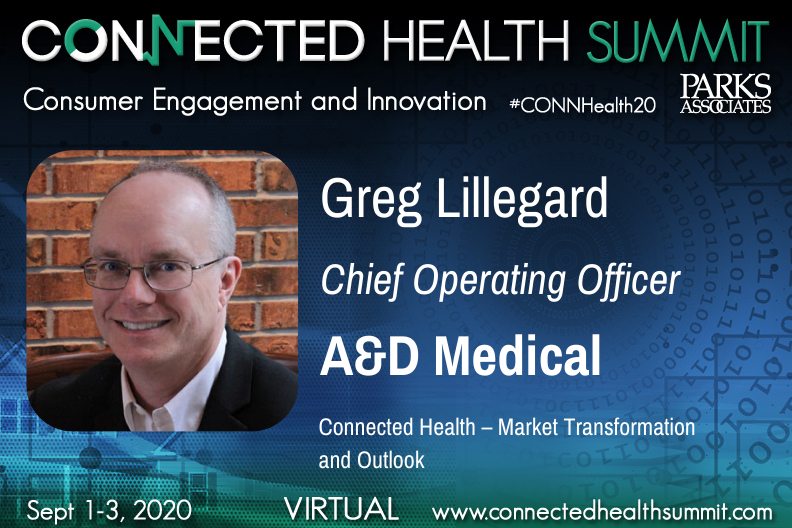Consumer Attitudes Towards Connected Health Solutions
 Ahead of the Connected Health Summit, Greg Lillegard, Chief Operating Officer of A&D Medical and one of the speakers at the conference, shared his insights on how COVID-19 has shifted consumer attitudes towards connected health solutions.
Ahead of the Connected Health Summit, Greg Lillegard, Chief Operating Officer of A&D Medical and one of the speakers at the conference, shared his insights on how COVID-19 has shifted consumer attitudes towards connected health solutions.
The Connected Health Summit is a three-day executive conference focused on the impact of connected devices and IoT healthcare solutions on consumers at home. It will take place virtually on September 1-3. Register now.
How has COVID-19 impacted the connected health markets?
The door has been opened for the connected health market as a result of social distancing during the pandemic. Out of necessity, clinicians had to change the way routine care is delivered. You could describe this fast adoption as extremely disruptive, but in a very good way for connected health. For example, during the peak of the pandemic 75% of cardiology appointments moved on-line. One of the biggest challenges in this shift was lack of routine biometrics and this is where the expansion of connected devices such as blood pressure monitors has exploded. We have heard clinicians describe managing chronic conditions without biometrics as flying blind, but technology is allowing them to collect rich data sets and analytics to improve the management of these conditions.
How have consumer attitudes towards connected health solutions shifted in the last year?
There is a huge shift in consumer behavior and attituded towards healthcare in general. 72%[1] of consumers have changed their use of healthcare services since the start of the pandemic. In many cases consumers have been forced to try virtual healthcare for the first time and have had a positive experience. Due to the pandemic, 2/3[2] of patients are more willing to use telemedicine. Two areas will likely continue to expand due to the convenience and efficiency are telemedicine triage and remote monitoring. Telemedicine triage is especially effective in determining if someone with COVID needs to be seen by a Healthcare professional. We can expect this type of triage to be used for many infectious diseases. The triage if likely to be more effective if biometrics are transmitted and connected parameters like temperature, blood pressure, weight and oxygen saturation. Remote monitoring creates an ongoing engagement with consumers and a healthcare professional. To support continued use beyond the special circumstances of this year, it is important for these tools to be very easy to use and convenient.
You can find the source for the statistics Mr. Lillegard uses in his response here.
Next: A Comprehensive Ecosystem for Healthcare
Previous: Adapting to a Global Health Crisis
Comments
-
Be the first to leave a comment.
Post a Comment
Have a comment? Login or create an account to start a discussion.


